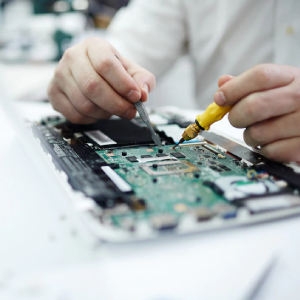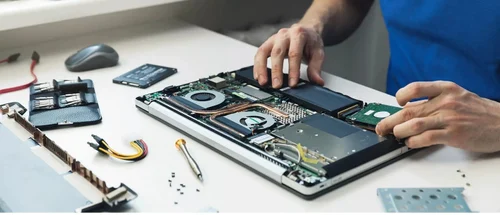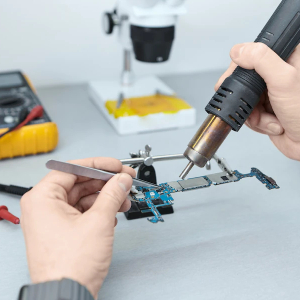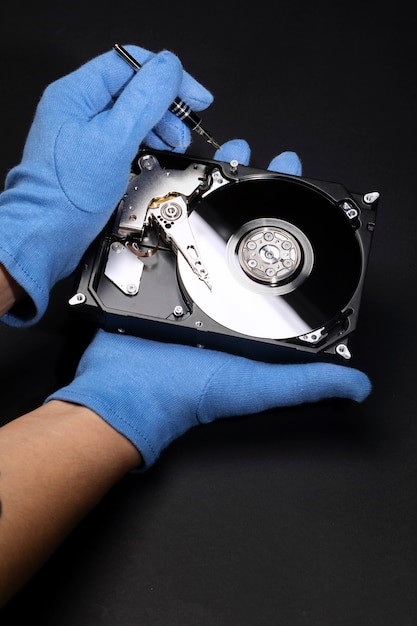In today’s digital age, data plays a pivotal role in both our personal and professional lives. Whether it’s precious family photos, important business documents, or critical financial records, the loss of data can be a nightmare. To mitigate this risk, many individuals and organizations turn to data recovery and data restoration services. While these terms are often used interchangeably, they refer to distinct processes with different objectives. In this blog, we’ll delve into the differences between data recovery and data restoration to help you better understand how to safeguard your valuable data. Data Recovery: Salvaging Lost Data Data recovery is the process of retrieving lost, damaged, or inaccessible data from storage devices such as hard drives, solid-state drives (SSDs), USB drives, and more. This type of service is typically sought when data has been accidentally deleted, a storage device has failed, or data has become corrupted due to various reasons such as viruses or physical damage. Here’s a closer look at the key aspects of data recovery: 1. Data Retrieval The primary goal of data recovery is to retrieve data that is no longer accessible through normal means. This can involve using specialized software, hardware, or a combination of both to extract data from a malfunctioning storage device. Data recovery specialists employ advanced techniques to recover lost files, even if they have been deleted or formatted. 2. Diagnosing Data Loss Data recovery professionals begin by diagnosing the cause of data loss. This may involve evaluating hardware components, checking for software issues, or analyzing the extent of physical damage. Understanding the root cause is crucial in determining the most appropriate recovery method. 3. Repairing or Rebuilding Data In cases where data is partially damaged or corrupted, data recovery specialists may attempt to repair or rebuild the damaged files. This involves extensive knowledge of data structures and file systems to reconstruct the data as accurately as possible. 4. Data Backup and Migration Once the data is successfully recovered, it is often backed up and migrated to a secure location or a new storage device to prevent future data loss. This step is critical to ensuring that the recovered data remains accessible and protected. 5. Preventing Future Data Loss Data recovery is not just about salvaging lost data; it also includes implementing measures to prevent future data loss. This may involve advising clients on data backup strategies, improving data security, and educating users on best practices for data handling. Data Restoration: Returning Data to its Original State Data restoration, on the other hand, focuses on returning data to its original state or a specific point in time. Unlike data recovery, which primarily deals with data loss or damage, data restoration is often used to recover a previous version of data or system configurations. Here are the key elements of data restoration: 1. Version Control Data restoration typically involves version control systems that maintain multiple copies of data. These systems allow users to roll back to a previous version of a file, database, or system configuration. Version control is commonly used in software development, but it can also be applied in various other contexts. 2. Point-in-Time Recovery One of the primary objectives of data restoration is achieving a point-in-time recovery. This means recovering data to a specific moment in the past. This is essential in scenarios where data corruption or loss occurred gradually, and you want to revert to a known good state. 3. System Restoration Data restoration can extend beyond individual files or data sets. It can involve the restoration of entire systems or server configurations. System restoration is particularly critical in the event of system failures, cyberattacks, or data breaches. 4. Data Archiving Archiving data is a key component of data restoration. It involves the systematic storage of historical data in a way that allows for easy retrieval and restoration when needed. Archiving is crucial for compliance, historical analysis, and disaster recovery planning. 5. Data Integrity Ensuring the integrity of restored data is paramount. Data restoration processes must guarantee that the recovered data is free from errors or corruption. Verification steps are often taken to confirm the accuracy and completeness of the restored data. Key Differences Now that we’ve explored the concepts of data recovery and data restoration, let’s summarize the key differences between the two: Objective: Data Recovery: Retrieving lost or damaged data. Data Restoration: Returning data to a previous state or version. Focus: Data Recovery: Addresses data loss or damage due to various factors. Data Restoration: Concentrates on reverting data to a specific point in time or state. Process: Data Recovery: Involves diagnostics, repair, and backup of lost data. Data Restoration: Utilizes version control, point-in-time recovery, and system restoration techniques. Scope: Data Recovery: Typically applied to individual files or data sets. Data Restoration: Can encompass files, databases, systems, and historical data. Prevention: Data Recovery: Focuses on recovery but may include recommendations for preventing future data loss. Data Restoration: Primarily concerned with reverting to a known good state. In conclusion, while data recovery and data restoration share the common goal of preserving and accessing data, they differ significantly in their scope and objectives. Data recovery is the go-to solution when data is lost or damaged, whereas data restoration focuses on returning data to a specific state or version. Both services play crucial roles in ensuring the availability and integrity of data in our increasingly digital world. Whether you’re dealing with a data crisis or planning for data management, understanding these distinctions can help you make informed decisions to safeguard your valuable information.









